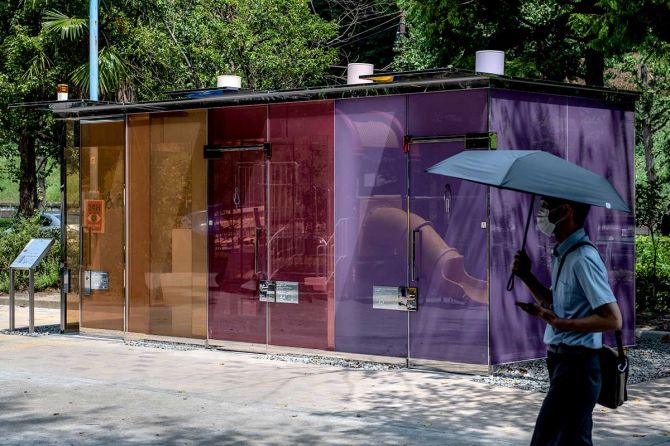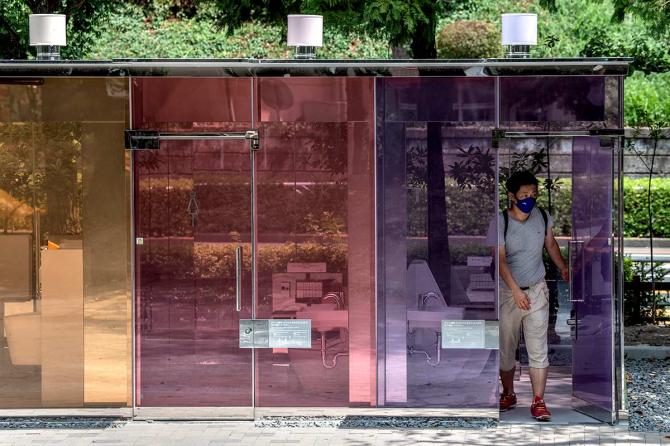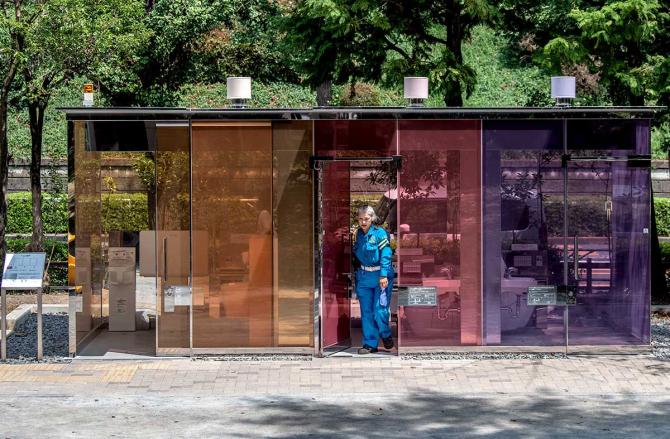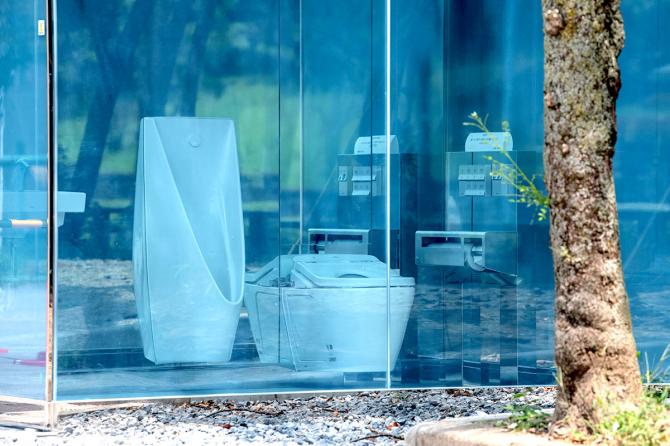It sounds like the worst kind of anxiety -- a public toilet cubicle which is entirely see-through.
That, though, is the design feature behind several toilets that recently opened in public parks in Tokyo.

IMAGE: A Japanese designer has unveiled transparent public toilets with glass walls that become opaque when they are occupied. Photograph: Carl Court/Getty Images
The “transparent” toilets, created by prize-winning architect Shigeru Ban and more than a dozen other leading designers, are made from coloured “smart glass” that turns opaque when the cubicles are occupied.
The see-through loos have opened in two parks in Shibuya, a commercial part of the Japanese capital which is renowned for its shopping facilities and quality of nightlife.
The glass technology has been used so people can identify whether the toilet is clean -- and if anyone is currently inside.

IMAGE: Acclaimed architect Shigeru Ban came up with the idea which he said was intended as a practical way to allow users to check for cleanliness as well as whether the toilet was occupied or not. Photograph: Carl Court/Getty Images
Users have already said how, once inside the toilet, they cannot tell if the glass is opaque or not - giving them the strange feeling they are on display while spending a penny.
Award-winning architect Shigeru Ban said in a statement on the project's website, said: "There are two things we worry about when entering a public restroom, especially those located at a park.

IMAGE: Japan’s hi-tech toilets have long been the subject of fascination among visitors to the country. Photograph: Carl Court/Getty Images
"The first is cleanliness, and the second is whether anyone is inside. Using the latest technology, the exterior glass turns opaque when locked.
"This allows users to check the cleanliness and whether anyone is using the toilet from the outside. At night, the facility lights up the park like a beautiful lantern."

IMAGE: The unique public toilets are located in Tokyo's Yoyogi Fukamachi Mini Park and the Haru-no-Ogawa Community Park. Photograph: Carl Court/Getty Images
The Nippon Foundation, a non-profit charity, has overseen the project and, in a statement, said: "The use of public toilets in Japan is limited because of stereotypes that they are dark, dirty, smelly and scary.
"These public toilets are being designed by 16 leading creators, and will use advanced design to make them accessible for everyone regardless of gender, age, or disability, to demonstrate the possibilities of an inclusive society."
There are plans to open more of the transparent toilets across the same neighbourhood by next spring.

IMAGE: The new facilities have replaced two older public toilets near the large Yoyogi Park in Shibuya. They consist of three separate cubicles, for male, female and disabled users. Photograph: Carl Court/Getty Images
Source:-Rediff.com used here for educational purposes as this blog is non commercial only.
No comments:
Post a Comment